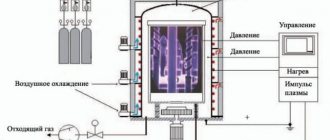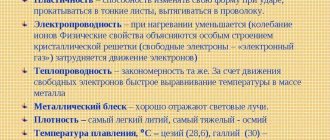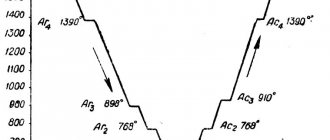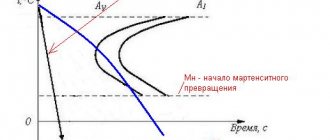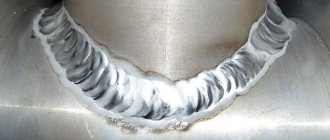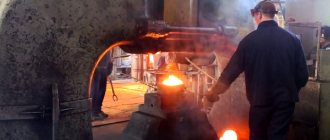Steel tempering is the final stage of heat treatment and is used to reduce excess hardness, reduce brittleness and eliminate internal stresses of the metal. It is most often applied to carbon steels that have been hardened to martensite, that is, heated slightly above 727 ºC and cooled at a high rate in an aqueous environment.
Typically, steel products are tempered at temperatures that are several times lower than the quenching temperature, while maintaining the martensitic structure, which ensures the hardness of the metal. Cutting tools and other products made from tool steels are mainly subjected to this heat treatment.
However, there are types of tempering with heating close to quenching (on troostite and perlite), after which the metal acquires the required elasticity and its impact strength increases. Alloying additives slow down the process of formation of the required structure, so parts made of alloy steels are tempered at higher temperatures.
Traditional tempering technology involves heating the product to a standard value and cooling it in the open air, although some types of steel products are tempered in oil or molten media. You can release the entire product or part of it. For example, only the butt and handle of knives are tempered, while maintaining the full hardening of the blade.
What is steel tempering?
Tempering of a metal is one of the types of heat treatment in which its phase state is preserved, but at the same time a number of hardening characteristics are corrected. First of all, during tempering, the stress of the internal structure, which arises as a result of deformations of the crystal lattice during quenching, sharply decreases.
In addition, rigidity and brittleness are reduced, which is a consequence of the saturation of the needle-shaped elements of martensite with ferrite and the formation of pearlite grains (see figure below). This structure retains the properties of hardened metal, but at the same time becomes more ductile and tough.
In alloyed steels, all these processes occur with some differences, which are associated with the fact that alloying elements under certain conditions become centers of crystallization and thus change the physical and chemical characteristics of the metal.
Steel products are tempered by heating them to a given value, followed by slow cooling in the open air or in a special environment. The phase state and structure of the metal formed after tempering, and, consequently, its physical characteristics, directly depend on the heating temperature.
In general, the rule is observed: the higher the temperature, the lower the brittleness and hardness and the higher the flexibility and toughness. Depending on the temperature ranges used, there are three main types of steel tempering: low, medium and high, the heating limits of which are, respectively, 300 ºC, 450 ºC and 650 ºC. The first type is characterized by the highest hardness, and the latter by the highest impact strength.
The heating temperatures during tempering of steels directly depend on their chemical composition, since alloying additives have a significant impact on the process of formation of structural elements. This is usually due to a slowdown in the decomposition of martensite, which requires an increase in temperature conditions.
In addition, when high-alloy steels are tempered, phenomena such as an increase in rigidity associated with the formation of troostite and the occurrence of temper brittleness may be present.
Processing of tool alloys
High, medium and low steel tempering are only suitable for heat treatment of alloys containing less than 0.7% carbon. For alloys with a higher carbon content (called tool alloys), other methods are used. Let's look at the main technologies:
- It is not recommended to temper high-speed tool alloys because they contain molybdenum, cobalt, tungsten, and vanadium. These elements are resistant to heat, so they do not change their physical and chemical properties during tempering heating. Instead of tempering, it is recommended to do multi-stage hardening: for this, the material is gradually heated to 800, 1050 and 1200 degrees - after which the alloy is sharply cooled in an oil environment.
- It is recommended to process conventional tool alloys in two stages. First, the material is hardened in molten salts at a temperature of 450-500 degrees. After this, the second stage is performed - double tempering at a temperature of 550-600 degrees (no more than 1 hour). Please note that when tool alloys are heated, the possibility of the occurrence of tempering ability of the second type is excluded.
Low Vacation
Low tempering is carried out in the temperature range of 120÷300 ºC.
The choice of a specific temperature regime depends on the grade of metal and the desired result. Most often, this method reduces internal stresses and slightly increases the toughness of tool steels, which require increased hardness and wear resistance. At 120÷150 ºC there is no change in hardness, but only residual stresses decrease. To reduce it, the product must be heated to at least 200 ºC and kept under these conditions for at least one hour. In the range from 200 ºC to 300 ºC, the formation of tempered martensite begins and the hardness decreases with a simultaneous increase in the toughness of the steel.
In some cases, a significant decrease in viscosity is observed in this temperature range, which is called temper embrittlement. The consequences of this phenomenon are eliminated by additional heat treatment. In addition to tool steel, low tempering with heating up to 250 ºC is also used for structural steels, the surface of which has been subjected to thermochemical treatment.
Process description
Steel tempering (STE) is a type of heat treatment in which the metal is gradually heated and then cooled.
In most cases, the tempering procedure is performed at the final stage immediately after hardening. OS can be performed both before and after the formation of a part from a semi-finished steel product. Allows you to eliminate internal stresses inside the metal, which negatively affect its physical structure and properties. Internal stresses at the chemical level are violations of the crystalline structure of the metal. Because of them, there is an uneven distribution of carbon and alloying additives throughout the metal alloy. Vacation allows you to redistribute these elements more evenly. This improves the physical and chemical properties of the material (ductility, strength, shape retention, chemical inertness). Heating is carried out using special furnaces in a protective environment (oil, saltpeter or alkaline baths). The method of cooling parts after heating is air (usually) or liquid (rarely).
The quality of steel tempering depends on the following physical parameters of the thermal procedure:
- Heating temperature. OS can be performed at temperatures from 100 to 700 degrees, and the higher the heating temperature, the higher the quality of processing. This dependence is explained by the fact that at higher temperatures a deeper change in the structure of the crystal lattice occurs. Mainly due to the processes of polygonization and recrystallization.
- Heating duration. OSes typically last between 1 and 3 hours, although longer formats exist. All main processes in the material take place in the first 20-40 minutes. Additional exposure is needed for uniform distribution of carbon atoms, iron, and alloying additives throughout the entire thickness of the material.
- Cooling speed. The rule here is extremely simple - the slower the cooling, the higher the quality of the material. To slow down cooling, metallurgists use various tricks and tricks. The main trick is to place the material in an oil, saltpeter or alkaline environment, which slows down the cooling of the material. Theoretically, cooling can be performed without the use of liquid media, but the cooling rate will be high, which will negatively affect the quality of the OS.
Average holiday
Medium tempering is intended for heat treatment of steel products, which must combine increased strength and elasticity with specified toughness parameters. As a rule, spring and spring steels operating under variable dynamic loads are tempered in this way.
The temperature range in this case is from 300 ºC to 450 ºC, and the hardness is reduced to 45÷50 HRC versus 60÷63 with low-temperature tempering. After such heat treatment, the steel acquires a troostite structure. The heating time during an average tempering can be up to several hours, and cooling is carried out naturally in calm air.
Varieties
The most important characteristic of the tempering procedure is the temperature at which it is performed. According to this indicator, this heat treatment is divided into three types. Let's look at them in a little more detail.
Low Vacation
Heat treatment of this type involves heating the part to a temperature varying within + 100 °C≤T≤ +250 °C. The duration of the technical process usually fits into a time interval of one to three hours. The exact value of this parameter is determined by the dimensions of the workpiece and its type. During low tempering, the phenomenon of diffusion of microparticles of carbon-containing components is observed, which is not accompanied by recrystallization, as well as polygonization of the molecular lattice. This improves a number of material properties:
- degree of chemical inertness;
- hardness index;
- the level of plasticity increases;
- strength characteristics increase.
Low release is classified as a universal technology. However, in most cases it is used for products for which high-carbon steel and containing alloying additives were used as raw materials (for example, cutting tools in the form of knives, kitchen utensils, etc.).
The main requirement for low tempering is formulated as follows: it is necessary to exclude the possibility of heating the metal above +250 °C. Otherwise, it will fall within the range of the type I fragility island, which can cause the part to become irreversibly unusable.
Average holiday
This heat treatment method is performed by heating the metal and holding it while maintaining the temperature in the range + 300 °C≤T≤ +450 °C, usually for at least 2 and no more than 4 hours. Cooling occurs in open space under natural environmental conditions. At the same time, the above-mentioned processes such as
- restructuring of the metal, accompanied by ordering of its dislocation structure - polygonization;
- formation and increase in size of some crystal grains at the expense of others - recrystallization
do not appear during active diffusion of particles of the element carbon (C).
The main goal of heat treatment of the type under consideration is to give parts the required elasticity, relaxation stability, and toughness without sacrificing high strength properties. Alloys obtained by the medium tempering method are characterized by a troostite structure and are characterized by a hardness determined by the Rockwell method at a level from 45HRC to 50HRC.
This heat treatment method is relevant mainly for structural elements and hardware, in the production of which spring-type steels were used. (eg 65C2BA. 70C3A). Such products include: bent steel strips connected together with brackets - springs; forging single- and multi-strand dies; elastic elements in the form of a spiral - springs; saws designed for working with wood, etc. The following basic requirement is put forward to them: resistance to the effects of variable dynamic loads.
High holiday
Heat treatment of this type involves heating parts to a temperature ranging from + 500 °C≤Т≤ +680 °C. The duration of the high holiday is approximately 2-3 hours. Very complex items can take up to 6 hours to process.
As a result:
- internal stress occurring in the metal is reduced by 95 percent;
- the impact strength indicator increases;
- the level of plasticity of the material increases.
But all this happens against the background of a decrease in the strength characteristics of the alloy. Its structure becomes sorbitol-like. That is, the processed metal in this case is a mixture of cementite and ferrite, which have a granular structure. When heated to a temperature fluctuating around +680 °C, the structure of the alloy will be distinguished by the predominance of granular pearlite.
High tempering heat treatment is used for products that are exposed to increased pulse loads during operation. These are, for example, moving parts connecting the piston to the connecting rod journal of the crankshaft of the power unit - connecting rods; forging hammers of all types, from steam-air, including hydraulic and ending with pneumatic; press.
High holiday
High tempering is carried out in a temperature range close to the critical point: from 450 ºC to 650 ºC.
After such heat treatment, the steel becomes ductile, its relative elongation and contraction, as well as impact strength, increase. This is due to the fact that the metal acquires the structure of tempered sorbitol and its internal stresses are reduced by 95%. In this way, products operating under shock loads are released: shafts, axles, connecting rods, parts of presses and forging hammers.
If steel is tempered at 690 ºC, then granular pearlite will prevail in its structure, and it will have maximum ductility and minimum strength. In some vanadium, chrome and tungsten steels, when tempered with heating up to 560 ºC, troostite may form, which leads to an increase in hardness (the so-called secondary hardness).
Tempering of high-speed tool steels
The main alloying elements of high-speed steels (P18, P6M5, etc.) are tungsten, molybdenum, cobalt and vanadium - elements that provide heat resistance and wear resistance during operation. High-speed steels belong to the carbide (ledeburite) class. For hardening, these steels are heated to a temperature above 1200°C (P18 to a temperature of 1270°C, P6M5 to a temperature of 1220°C). High quenching temperatures are necessary for more complete dissolution of secondary carbides and obtaining austenite highly alloyed with chromium, molybdenum, tungsten, and vanadium. This ensures that heat-resistant martensite is obtained after quenching. Even at very high heat, only part of the carbides dissolves. These steels are characterized by the preservation of fine grains at high heating temperatures.
Iron and “quick-cut” alloying elements have very different thermal conductivity properties, therefore, when heating, temperature stops should be made to avoid cracks. Typically at 800 and 1050°C. When heating a large instrument, the first exposure is made at 600°C. The holding time is 5-20 minutes. Holding at the quenching temperature should ensure the dissolution of carbides within the limit of their possible solubility. Cooling of the instrument is most often done in oil. To reduce deformation, stepwise hardening is used in molten salts at a temperature of 400-500°C. The structure of “quick cuts” after quenching consists of highly alloyed martensite containing 0.3-0.4% C, undissolved excess carbides and retained austenite. The higher the quenching temperature, the lower the position of points Mn, Mk and the more retained austenite. In R18 steel there is approximately 25-30% retained austenite, in R6M5 steel - 28-34%. To reduce austenite, cold treatment can be done, but as a rule this is not required.
After quenching, tempering follows at 550 - 570°C, causing the transformation of retained austenite into martensite and dispersion hardening due to the partial decomposition of martensite and the release of dispersed carbides of alloying elements. This is accompanied by an increase in hardness (secondary hardness). During the holding process during tempering, carbides are released from the retained austenite, which reduces its alloying, and therefore, upon subsequent cooling, it undergoes a martensitic transformation (Mn ~ 150°C). During a single tempering process, only part of the retained austenite is transformed into martensite. In order for all the austenite to transform into martensite, two and three times tempering is used. The holding time is usually 60 minutes. When assigning a regime, it is necessary to take into account the chemical properties of the elements and the frequency of carbide release depending on temperature. For example, the maximum hardness of R6M5 steel is obtained through 3-stage tempering. The first tempering is at a temperature of 350°C, the next two at a temperature of 560-570°C. At a temperature of 350°C, cementite particles are released, evenly distributed in the steel. This contributes to the uniform release and distribution of special M6C carbides at a temperature of 560-570°C.
Tempering brittleness
For almost all steels, a standard relationship applies: the higher the heating temperature during tempering, the greater the ductility and toughness of the tempered product.
However, for some brands, as the temperature increases, these physical characteristics decrease and hardness and brittleness increase. This phenomenon is called temper brittleness and occurs during heat treatment of both carbon and alloy steels. It manifests itself in two temperature ranges: 250÷400 ºC and 500÷550 ºC and, accordingly, is called type I and II temper brittleness (see figure below).
The first is typical for carbon steels, and you can get rid of it by heating the part again a little above 400 ºC. As a rule, it does not appear again, but at the same time the metal exhibits a slight decrease in hardness. Type II temper brittleness can occur in alloy steels, which, after heating to the specified range, are subjected to slow cooling.
To counteract this problem, the cooling rate is usually increased, but reheating the product may again cause such brittleness to occur. Another way to get rid of this phenomenon is to introduce small amounts of molybdenum or tungsten into the steel composition.
It is preferable for tempering large-sized parts, since a high cooling rate can cause their deformation and the occurrence of excessive internal stresses.
Steel tempering in domestic conditions
Home craftsmen most often heat treat vehicle parts, as well as kitchen utensils - metal mugs, forks and knives. But household metallurgy has many limitations. And the average person may simply not know them. Let's name just a few of the problems that he will most likely have to address.
- In ordinary home furnaces, it is simply impossible to heat the alloy to the required high temperature. Therefore, two types of vacation are available in everyday life - only low-temperature or medium. Although theoretically it is possible to make an attempt aimed at re-equipping or, so to speak, “strengthening” the furnace in order to increase the heating temperature, a person who does not have experience in this matter will not cope with the solution of such a task.
- Carrying out heat treatment involves working in a protective environment in the form of nitrate - ammonium, potassium, etc., alkaline compounds or oils. However, each substance has individual temperature differences. You don't have to look far for examples. Thus, compositions based on nitrate can explode when heated to high (critical) temperatures. This will negatively affect the health of the home handyman.
- Tempering without using a protective environment will negatively affect the quality characteristics of the metal itself. The reason is that without it the material will cool at an accelerated pace. This will lead to the appearance of oxides, plastic (i.e. irreversible) deformation, the production of bends, and an increase in the degree of fragility.
- Also, type I thermal brittleness (+250°C≤Т≤+400°C) should be taken into account. Incorrect temperature conditions will seriously affect the quality of the metal, including its irreversible destruction.
How to release steel yourself
In order to temper steel at home in order to relieve internal stress, it is not necessary to know its grade - it is enough to heat it to a temperature no higher than 200 ºC and hold it in these conditions for at least an hour.
If you plan to temper a steel product to reduce hardness and increase toughness, then knowledge of the steel grade is necessary to determine the tempering temperature conditions. This is actually not as difficult a task as it might seem. In textbooks on heat treatment and on Internet sites there are enough tables with lists of products and the grades of steel from which they are made, and often even with the temperature conditions for their quenching and tempering (see table above).
To heat your part, you can use almost any heat source: from the oven to a gas burner or a homemade forge. An important point is the heating temperature. In principle, it can be determined by color tables of tarnish appearing on hot metal, which are also easy to find on the Internet.
This is an old proven method, known since ancient times, but it requires some experience, since its main disadvantages are the subjectivity of color perception and its dependence on external lighting. For a beginner, the best solution would be to use a stove thermostat or a regular multimeter with a thermocouple.
Has anyone ever used a multimeter with a thermocouple to measure the tempering temperature? How accurate is this device and how do its readings correspond to the color of the tarnish? If anyone has such experience, please write your opinion in the comments.
Coolants
The main coolant for steel is water. If you add a small amount of salts or soap to the water, the cooling rate will change. Therefore, under no circumstances should the quenching tank be used for other purposes (for example, washing hands). To achieve the same hardness on the hardened surface, it is necessary to maintain the coolant temperature at 20 - 30 degrees. You should not change the water in the tank frequently. It is absolutely unacceptable to cool the product in running water.
The disadvantage of water hardening is the formation of cracks and warping. Therefore, only products of simple shapes or cemented ones are hardened using this method.
- When hardening products of complex configurations made of structural steel, a fifty percent solution of caustic soda is used (cold or heated to 50 - 60 degrees). Parts heated in a salt bath and hardened in this solution turn out light. The solution temperature should not be allowed to exceed 60 degrees.
Modes
Vapors formed during quenching in a caustic solution are harmful to humans, so the quenching bath must be equipped with exhaust ventilation.
- Alloy steel is hardened in mineral oils. By the way, thin carbon steel products are also carried out in oil. The main advantage of oil baths is that the cooling rate does not depend on the oil temperature: at a temperature of 20 degrees and 150 degrees, the product will cool at the same rate.
Be careful not to let water get into the oil bath, as this may cause the product to crack. What is interesting: in oil heated to a temperature above 100 degrees, the ingress of water does not lead to the appearance of cracks in the metal.
The disadvantage of an oil bath is:
- release of harmful gases during hardening;
- formation of plaque on the product;
- oil's tendency to flammability;
- gradual deterioration of hardening ability.
- Steels with stable austenite (for example, X12M) can be cooled with air supplied by a compressor or fan. At the same time, it is important to prevent water from entering the air duct: this can lead to the formation of cracks in the product.
- Step hardening is performed in hot oil, molten alkalis, and low-melting salts.
- Intermittent hardening of steels in two cooling environments is used for processing complex parts made of carbon steels. First they are cooled in water to a temperature of 250 - 200 degrees, and then in oil. The product is kept in water for no more than 1 - 2 seconds for every 5 - 6 mm of thickness. If the exposure time in water is increased, cracks will inevitably appear on the product. Transferring the part from water to oil must be done very quickly.
Welding a car yourself is not an easy task, but it can be done. Do you need to cut metal quickly and efficiently? Use a plasma cutter! How to do it correctly, read this article.
If you are interested in how to turn metal products, read the article at https://elsvarkin.ru/obrabotka-metalla/tokarnaya-obrabotka-metalla-obshhie-svedeniya/ link.
How to do hardening and tempering
After the blade blank has been given the required shape, it is hardened. Of course, everything is very individual for different grades of steel, for specific products, but on average, craftsmen call the heating temperature for hardening about 700–800 degrees Celsius. The optimal color of the product in this case will be scarlet or cherry. If the redness goes away, giving way to orange and yellow hues, the temperature has most likely exceeded 1,100 degrees - this is already too much for most steels. The white color indicates that the temperature has reached at least 1,300 degrees, and it is not suitable for hardening - it will cause overheating; in this case, it will be impossible to restore the strength of the steel.
It is these colors that are called the colors of incandescence. We will meet with them again when we consider a vacation.
The heat colors show us the temperature the workpiece has reached. They should not be confused with tarnished colors - shades of oxides
When a blade is hardened, it gains high hardness, but at the same time loses strength. Now the strength must be restored: vacation serves this purpose. Vacation, as we remember, is reheating to lower temperatures followed by cooling; Let's add to this that between repeated heatings the blade must cool completely - naturally or by cooling it in a saline solution or oil. We select the heating temperature for tempering as follows.
- Most likely, we do not need high-temperature tempering - it is done for parts that are subjected not so much to deformation as to shock loads, and this clearly does not apply to knives. However, let’s say about it that its temperature limits are 500–680 degrees.
- Medium-temperature tempering is heating to 350–500 degrees; This is also a lot, only suitable for throwing knives.
- Low temperature holiday is what you need. Warming up here goes up to 250 degrees. Of course, the knife will not be so resistant to lateral impact loads, but we don’t need this: we have already achieved the required hardness during hardening, and now we are interested in strength. At this temperature it will turn out just right.
The desired temperature will again be shown by the heat colors: the optimal color in this case (for the knife) will be light yellow.
After each stage at which oxide products (tarnish) appear, the product should be cooled in salt water or oil. In clean water, the workpiece should not be cooled either after hardening or during tempering - due to too high a cooling rate, the product may crack. Neither water nor oil fully meets the necessary requirements for hardening carbon steel: rapid cooling to 550 °C and slower cooling from 300 °C to 200 °C. Therefore, water is used in combination with oil: first into water, and then into oil. This method is used on tool steels and is called “into oil through water.” But alloy steels can only be hardened in oil.
The colors of tarnish on the blade of the “Zombie” collection knife are oxides that were not removed after tempering

